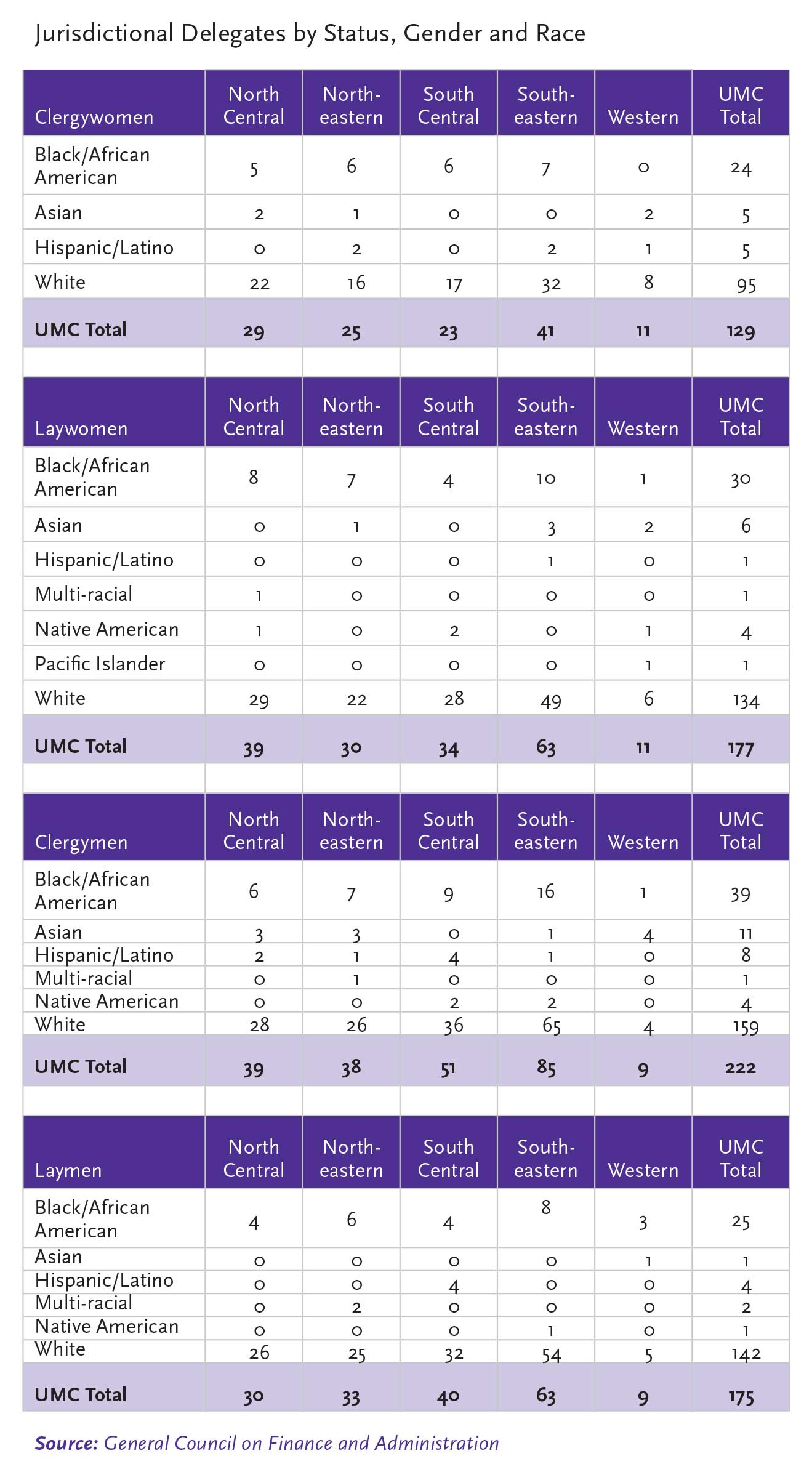In mid-July, delegates to the five U.S. Jurisdictions are electing bishops and assigning representatives to church agencies. As the church reaches out to geographical areas with ministries and new church starts, are the appropriate demographic groups and voices represented in the decision-making process at jurisdictional conferences?
- Only one area, the Western Jurisdiction, elected more women than men as jurisdictional delegates. Overall, 56% of the jurisdictional delegates are men.
- In both the South Central and Southeastern Jurisdictions, clergymen were elected 2 to 1 over clergywomen. Clergymen represent 63% of the total number of clergy jurisdictional delegates. Laywomen have a slim majority of two delegates more than laymen, with just three of the five jurisdictions electing more laywomen than laymen. Still, laywomen represent 50.3% of the total number of jurisdictional lay delegates.
- White delegates are 75% of the total; the next large racial-ethic group are African Americans (17%). For all racial-ethnic groups (8%), their total number of jurisdictional delegates (55) is less than the number of white delegates for just one jurisdiction, with the exception of the Western Jurisdiction.
- Racial-ethnic people represent 28% of the total number of clergy delegates; laity represent 22% of the all lay delegates.
- White delegates represent 74% of clergywomen, 76% of lay women, 72% of clergymen and 81% of lay men.

How gender affects resignations, terminations at churchwide agencies
Almost two women for every one man left an agency as an employee during 2006, according to the desk audits conducted by the General Commission on Religion and Race and the General Commission on the Status and Role of Women.
The number one reason that women and men left agency employment was that they had secured a new job. Beyond that, though, the variety of reasons offer a snapshot of why male and female employees leave general agencies of the church.
Other reasons employees leave:- 41 women and 9 men lost jobs as a result of position termination/restructuring. 18 of the 50 people who lost their jobs were racial-ethnic women (36%).
- 18 women and 0 men left the employment of the general agencies for “personal” reasons; and 42 individuals (men and women) left for “other” reasons—e.g., to attend school—or because they were dissatisfied with their pay or work environment. A total of 60 persons left the general agencies for “personal” or “other” reasons (representing 15% of the total number of individuals who left).
- 32 women and 12 men said they resigned their agency positions through “mutual agreement” with their supervisors.
- 27 women left the agencies because of performance, compared to 15 men; almost 2 to 1.
- 10 women (9 were racial-ethnic women) and 3 men were dismissed because they violated agency policies or failed to improve their performance after a warning and probationary period.
- 8 women and 1 man left their jobs at general church agencies because of family (8) and spouse relocation (1).
The Women by the Numbers article in the January-March 2007 issue reported that women made up 68% of the general agency workforce in 2006; men made up 32%. Racialethnic employees—including those from Africa, Latin America, Asia and the Pacific Islands—account for 27% of agency employees, according to our April-June 2007 article.
Women outnumbered men as employees of general agencies in 2006, although they were more likely to hold clerical jobs than executive posts. Still, based on these findings, the percentage of women (and racial-ethnic women in particular) employees that had their positions terminated by church agency or terminated due to policy violation and probation failure was greater than their proportion of the workforce.
Therefore, general agencies of The United Methodist Church should examine their hiring, performance appraisal, promotion and retraining processes for institutional racism and sexism. Although most agencies have rigorous policies in place to encourage inclusive staffing, a closer examination of who leaves church employment and why can help us not only hire a more diverse team but maintain and nurture ongoing inclusion.
Craig This is data analyst in the Department of Institutional Research at Wright State University in Ohio.
